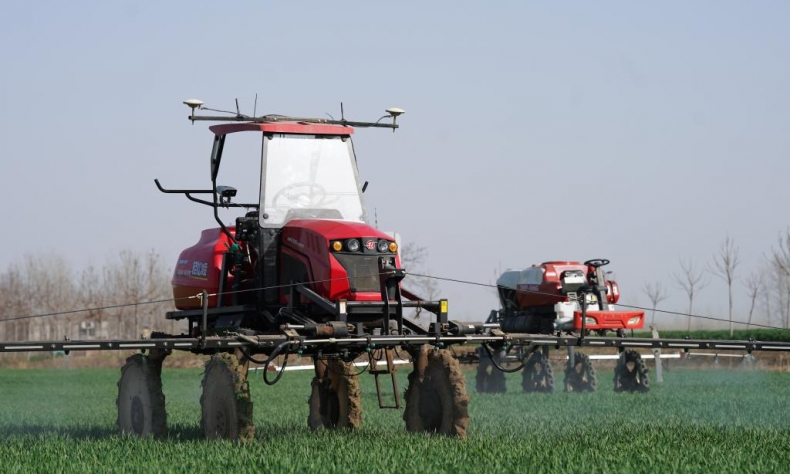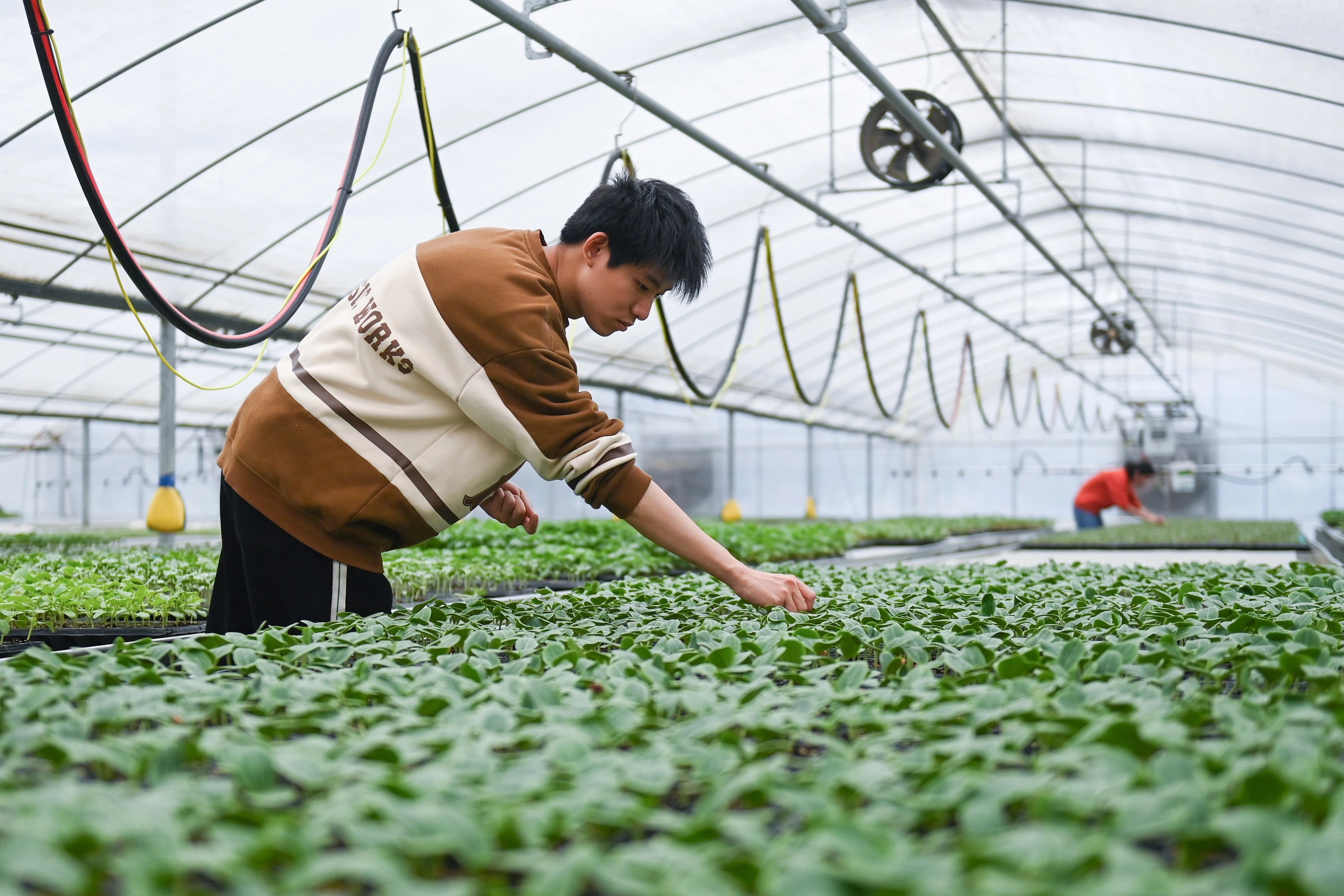Fields of Future

By combining land security, technological innovation, and economic diversification, China is shaping a coherent and ambitious model for agricultural modernisation.
Farmer Luo Baozhen receives regular weather updates on her smartphone, which help her to better manage her tea farm. Once living in precarious conditions and struggling to make ends meet, Luo now earns as much as 28,000 yuan ($3,868) annually from tea plantation on her 8 mu (0.53 hectares) of land in Pu’er, Yunnan Province. The modernisation of farming and the use of high technology have become a daily reality for farmers and significantly boosted their incomes.
This remarkable transformation reflects the impact of the No. 1 Central Document, the first policy statement issued each year by China’s central government. Since 2004, agricultural issues have been a key focus of this document. The 2025 version, unveiled in February, reaffirms the country’s commitment to rural revitalisation through structural reforms and the application of advanced technologies.
Ensuring food safety
The document has continuously stressed the need for rigorous measures to ensure food security. Consequently, China’s grain production reached a record high of 706.5 million tonnes in 2024. Elucidating the importance of the grain output, Han Wenxiu, director of the Office of the Central Rural Work Leading Group, indicated that it was important to maintain a balance between the demand and supply, because once production falls, it is difficult to recover quickly. This explains the adoption of rigorous measures to raise output.
These measures include a ban on converting arable land for non-agricultural uses and a 30-year extension to expired land contracts. These land guarantees aim to secure farmers’ investments and ensure continuous, sustainable production. Additionally, a compensation mechanism combining subsidies, agricultural insurance, and purchase contracts protects producers from market and climate uncertainties.
In Jilin Province in northeast China, an insurance programme covering maize, rice, and wheat costs has pushed production to the record high of 42.7 million tonnes in 2024. Zhong Dong, deputy director of the Department of Agriculture and Rural Affairs of Jilin Province, noted that this compensation scheme offers farmers a stable income and economic security even in difficult times, thereby ensuring the stability of grain production.
Raising yields
With 1.79 billion mu (119.3 million hectares) of land for grain under cultivation, a level not seen since 1979, the expansion of area has reached its limit. Increasing unit yields, responsible for 80 percent of last year’s production growth, is becoming the main driver of growth.

The development of new quality agricultural productive forces, combining biotechnologies, drones, artificial intelligence, and digital tools, is emerging as a catalyst for modernisation. “These applications can effectively transform agricultural production and accelerate our agricultural modernisation,” said Jin Wencheng, director of the Research Centre for Rural Economy at the Ministry of Agriculture and Rural Affairs, analysing this concept initially put forward in the document.
Ministry figures confirm this trend: Technological advances now account for 63.2 percent of agricultural growth, and quality crop varieties account for 96 percent of the cultivated land, contributing to 45 percent of the increase in cereal production. The New Hope Group’s intelligent dairy farm in southwest China’s Sichuan Province is a concrete example of this technological shift. Each cow wears a connected collar and ear tag, collecting real-time data on milk production, weight, and respiratory rate. Thanks to a centralised Internet of Things platform, feed is adjusted and air conditioning regulated, ensuring optimum production conditions.
Diversifying for prosperity
Rural modernisation is not just about improving agricultural productivity. The Chinese government is also promoting the diversification of rural economies to revitalise the region. The processing of agricultural products, rural tourism, and renewable energy are all growth sectors. In 2024, major agri-food processing companies’ turnover reached 18 trillion yuan ($2.49 trillion), revealing the full potential of this sector.
The document encourages counties to become engines of growth by developing local value chains that link agriculture to industries such as food processing, textiles, and renewable energy production. According to Zhang Qi, director of the China Rural Revitalisation and Development Research Centre at Beijing Normal University, “counties, as the hinge between urban and rural areas, are the backbone of the national economy and an essential lever for shared prosperity.”
An inspiring example can be found in the Horqin Zuoyi Middle Banner in Inner Mongolia Autonomous Region, where an agricultural cooperative has implemented an innovative bi-seasonal model. By alternating quinoa and vegetable cultivation, it optimises land use and diversifies production. It has also developed six processing lines, employing around 300 seasonal workers. This model creates added value locally while multiplying farmers’ income sources.
By combining land security, technological innovation, and economic diversification, China is shaping a coherent and ambitious model for agricultural modernisation. From connected farms in Sichuan to inventive cooperatives in Inner Mongolia, these models illustrate the country’s ability to transform its rural practices to meet the major challenges of tomorrow.
 Facebook
Facebook
 Twitter
Twitter
 Linkedin
Linkedin
 Google +
Google +










